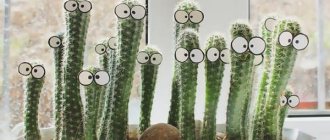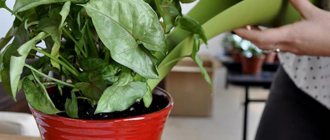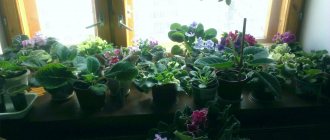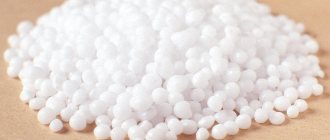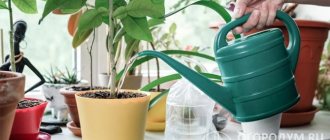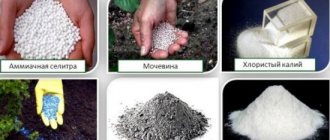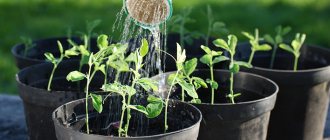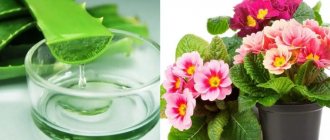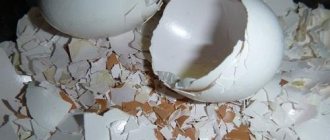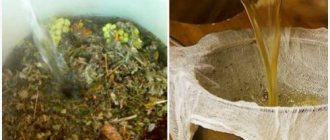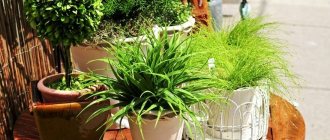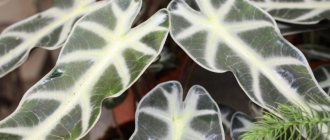Onion is a vegetable that is very often used in preparing various dishes. Not everyone knows that onion peels, which are mostly thrown away, are an excellent fertilizer.
Organic soil nutrition
Onion scales contain: carotene, vitamins, phytoncides.
It is believed that carotene has a very great life-giving power. It serves as an antioxidant for plants. It helps them increase endurance and resistance to various diseases. In addition, it kills harmful microorganisms, including fungi.
A large amount of phytoncides is concentrated in onion scales. They destroy the harmful environment that exists in the soil - fungi, bacteria. To use phytoncides without them “evaporating,” the scales are filled with water.
Onions contain a huge amount of vitamin B1. It reacts with phosphoric acid to create carboxylase. Sprouts need this substance for the degeneration of carbon and the production of nutrients.
The husk also contains nicotinic acid, which processes oxygen, nitrogen, and sulfur. Nicotine helps in low light conditions. It stimulates the formation of roots and strengthens them.
Feeding young seedlings by watering is very useful, since after the seedlings grow much faster, their stems become powerful and thick, and the leaves become stronger.
Why use for home flowers?
Its valuable properties have been known for a long time. My grandmother also said: “Put down the husks and reap the harvest!” Both she and the infusion prepared from the onion “clothing” not only affect the health of the plant, but also the yield. And for indoor flowers - both for budding and flowering time.
The infusion will help get rid of spider mites, whiteflies and aphids on indoor plants . In addition, it is a free, environmentally friendly and safe fertilizer.
It is especially useful to use a decoction of husks in winter. It will help indoor plants avoid vitamin deficiency and is good for preventing root rot. The decoction also serves as an immunostimulant. If your indoor plant has not pleased you with flowering for a long time, feed it with this potion. And the effect won’t take long!
Onion peels contain many useful substances and microelements:
- carotene;
- phytoncides;
- B vitamins;
- ascorbic acid and other useful microelements.
Advantages and disadvantages
A decoction of onion “dress” has a good effect on plant roots, has an anti-inflammatory and restorative effect, helps the plant when it would seem that all methods have been tried and all actions have been taken. It strengthens and accelerates the growth of the root system. Stimulates the plant for rapid growth and lush flowering.
Along with obvious advantages, there are also disadvantages to this feeding method. More precisely, you need to use the husk with caution . Use the decoction strictly in diluted form, otherwise you can burn the roots. And most importantly, the peel must come from a healthy onion. If the fetus is sick, then its shell could become infected with various diseases.
How is onion peel infusion useful for indoor plants?
Onion peels contain the components necessary for flowers:
- carotene;
- several groups of vitamins;
- phytoncides;
- a nicotinic acid.
Carotene acts as an antioxidant and allows plants to increase immunity to disease and improve endurance. In addition, this component leads to the destruction of pathogenic microflora, including fungi.
Phytoncides help destroy fungi and harmful bacteria in the soil. To prevent this component from evaporating, the husks must be filled with water.
Vitamin B1 reacts with phosphoric acid and forms carboxylase, a substance that plants need to process carbon and form nutrients.
We recommend: 7 ways to keep your cat away from indoor flowers and seedlings
Nicotinic acid promotes the processing of oxygen, sulfur, and nitrogen. It is simply necessary for indoor flowers in low light conditions. This component helps to grow and strengthen roots.
How to water, spray and fertilize the soil?
There are many recipes for preparing healthy solutions from onion peels. We present to you the simplest and easiest to prepare.
- Brew onion peels (1 tbsp. boiling water per handful of peels). Cool and add 1 tsp. liquid soap. Spray the plants with the resulting product every 5-7 days. This medicine will rid plants of whiteflies and aphids.
- Brew a handful of onion peels with one glass of boiling water. Dilute the resulting solution in 5 liters of plain, settled water. Water once a week. This is a very good fertilizer during flowering.
- Aphids are enemy number one not only for garden plants, but also for indoor flowers. To combat it, you can use an infusion of onion peels. For 10 liters of water, use 200 grams of husk, boil and leave for 24 hours. The resulting concentrated infusion is sprayed onto the affected plants. Repeat the procedure after 14 days.
- Well-dried husks can also be used in this form. When replanting a plant, add a pinch to the soil. It will help the flower to get used to its new place better. At the same time, it will feed him.
- A decoction of the husks will help houseplants survive the winter. 1 liter pour 2 liters of boiled water. As soon as the brew has cooled and acquired a rich amber-brown color, the infusion is ready for watering. Feed your home plantings with this mixture once a week.
Onion peel infusion against pests
Thrips, aphids, mites and other pests often appear on indoor plants.
Thrips cannot be seen with the naked eye; only black dots or stripes are visible on the foliage. Pests secrete a characteristic sticky liquid, which causes sooty fungus to develop over time.
Spider mites weave flowers with barely noticeable webs.
To destroy pests, an infusion is used, which is prepared within 3 days from a liter jar of husks and 2 liters of water. After preparation, the liquid is decanted, liquid soap is added and diluted with water 2 times.
First, the leaves of the plants are wiped with the resulting composition, and then sprayed in such a way that the substance necessarily gets on the inside of the foliage.
What are the mistakes?
A decoction of onion peels is the most accessible and, most importantly, cheap fertilizer for indoor plants.
It should be used immediately after cooling, when the concentration of substances in the decoction is maximum.
Be sure to dilute with water before use! Remember that the solution should never be used in its pure form.
Make sure that when drying, midges do not infest the husks and they do not begin to rot. Therefore, before brewing, carefully examine it, take only healthy skin. It should be stored in cloth bags that allow air to pass through well.
The examples given are not a panacea for all diseases of indoor plants. But they work! Try it - you have nothing to lose! And we promise you that the plants will thank you with lush flowering and magnificent appearance!
Onion peels as fertilizer and disease prevention
If indoor flowers are rapidly losing their decorative qualities, then you should immediately water them with an infusion of onion peels.
How to prepare an infusion?
- A handful of husks must be poured with 1.5 liters of boiling water, placed on the stove and boiled for 5 minutes.
- After this, you need to remove the broth from the stove and leave for a couple of hours.
- Strain the finished product and cool.
Flower growers recommend spraying plant leaves and the top layer of soil with this decoction once a month. This procedure not only has an antiseptic effect, but also saturates the soil with essential microelements.
It should be remembered that this infusion is not suitable for storage; it should be prepared each time before use.
Using onion peels for indoor flowers
Our indoor flowers are also susceptible to various diseases and pests. And growing them in cramped pots doesn't provide them with the nutrients they need to grow and bloom well. By watering indoor flowers with onion peel solutions, we fertilize them and protect them from pests and diseases.
Dilute 5-6 ml of extract in 1 liter of water and water the plants. Or make an infusion by brewing a liter jar of onion scales in 2 liters of hot water and let it brew for 2 days, then strain. For watering, dilute the infusion in a ratio of 1:2 and water your flowers. Repeat the procedure 2-3 times every week.
And another interesting video about feeding indoor plants with onion peels.
Dear readers, now you have learned that onion peels are very useful for a wide variety of plants in the garden, just like eggshells, potato peelings, sunflower seed shells, and citrus peels. Don't throw them in the trash. I hope that I have convinced you of their usefulness for the garden. If this information was useful to you, share it with your friends by clicking on the social buttons. networks.
Have a good harvest!
What are the beneficial properties of onion peels for seedlings?
Onion peels contain many useful microelements, chemical compounds and vitamins. It contains phytoncides that protect plants from pathogenic microflora and increase the immunity of seedlings. It also contains a lot of vitamins (A, B, PP), which seedlings and large seedlings need for healthy growth and development.
In addition, it has been noted that this decoction can be used to protect plants from parasites. For example, thrips, aphids and mites. Onion peels also increase the resistance of seedlings to fungal diseases: rot, bacteriosis, and blackleg.
ON A NOTE. One cannot fail to mention among the advantages that this is an environmentally friendly, non-toxic product. It is easily accessible and easy to use.
How to make a decoction of onion peels for feeding tomato seedlings
Tomatoes love this fertilizer very much. It can be used regularly until the harvest of ripe tomatoes.
The prepared solution can not only water seedlings, but also carry out foliar feeding. The main thing is no more than 1 time per week. For greater efficiency, you can alternate watering and spraying.
The decoction is prepared according to the classical scheme: the concentrate is boiled (1 cup of husk per 400 ml of water), then the concentrate is diluted in a ratio of 1 to 10.
ON A NOTE. The decoction left over from dyeing Easter eggs is quite suitable for feeding plants.
Dry onion peel and its uses
The laziest way to use onion peelings is to use them dry. This is an excellent fertilizer and mulching composition. It is not difficult to obtain - collect the husks, dry them in a bright, warm and dry place. Then store in paper bags or bags made of natural “breathable” fabric.
Using the collected cleanings is as easy as shelling pears:
- Feeding. Apply the husks during spring or autumn digging when preparing the beds. Another way is to pour a heap of fertilizer into the bottom of the hole when transplanting seedlings. But here we need a measure - no more than 3 liter cans of husks per 1 m2. Applying more, of course, will not harm the plants. But the problem is different: saturating the soil with onion essential oils changes the taste of the crop. Cucumbers, for example, acquire an unpleasant bitter taste.
- Mulch. Grind the onion “scales” and scatter them around the planting stem. Light material is best used in a greenhouse - in open conditions it can be blown away by the wind. Dry onion peels have a triple effect here: mulching, fertilization and disinfection.
- Disinfection, prevention. Dry husks are very useful for greenhouses - scatter them around the perimeter of the space to prevent the appearance of pests.
Another use for some reason unknown to many of dry onion “scales” is for long-term storage of potatoes, carrots, and celery root. Before moving the crop to the cellar or basement, I cover the root crops with husks. This protects them from rotting - onions are known for their antiseptic, antimicrobial properties.
How to use onion peels for plant diseases
Onion peel has anti-inflammatory, regenerating and antimicrobial properties. Therefore, its use is very effective, both for the treatment and prevention of many plant diseases.
- Black leg usually appears on seedlings when they grow on a cold windowsill in heavily moist soil. This also happens with cucumbers in August, when cold nights set in. To prevent this from happening, spray the plants with the infusion according to the first recipe every 5-6 days. Repeat the procedure 2-3 more times.
- Downy mildew , which can appear on cucumbers in August, so without waiting until it can affect the plants, also spray the plants for preventive purposes. Carry out the treatment every week.
How to use a decoction or infusion
I will share with you my grandmother’s simple but effective recipes that help her grow a royal harvest.
onion infusion for the garden
Decoction
The most popular onion fertilizer is decoction. I will present to you two simple cooking methods:
- A mild decoction. Take 2 full handfuls of dry peel, fill them with 10 liters of water. Bring the mixture to a boil, then simmer for 5 minutes. Cool, leave for 4 hours.
- Concentrated decoction. Immediately fill the onion scales with hot water in a ratio of 1:2. Place the container with the mixture on the fire and bring to a boil. Then leave for 2 days.
I use decoctions as a universal fertilizer for all garden dwellers. Another use of the product is as a natural insecticide. The decoction helps to cope with a whole host of enemies:
- aphid;
- codling moth;
- spider mite;
- flea beetles;
- thrips;
- Colorado beetle.
If the composition is applied as a fertilizer by root watering, then as a preparation against pests - by spraying. For greater efficiency, I dilute fine shavings of laundry soap in it. I pour the mixture into the sprayer tank and treat the affected seedlings for treatment, and healthy ones for prevention. There is no need to think about personal protection here - onion broth is safe for both the gardener and the plantings.
The most effective decoction will be on the day of preparation - try to use it for its intended purpose within 4-6 hours. Otherwise it will go rotten. will be useless for planting.
Onion fertilizers are harmless, so you can use them frequently without fear:
- As a fertilizer: after 5-6 days.
- As a pest control: after 3-4 days.
A little grandmother's secret: the most useful husks are rich in color. It contains more active substance - coloring pigment.
Cold infusion
The simplest recipe is to prepare an infusion that does not require heat treatment. In order for the composition to become useful, it is infused a little longer than the hot remedy. I will present several options for infusions of varying concentrations:
- For 1 liter of water at normal room temperature - 20 g of dry husk. It is enough to leave the mixture for 1 day in a dark place.
- Heat the water to 40-45 C. Place the husks in a thermos or other hermetically sealed container. Fill with water and leave for 15-20 hours in a warm space.
- Fill the onion “scales” with warm water 1:2. Leave for 3-5 days. This is the most concentrated infusion that can also be used to eliminate pests.
The resulting composition can be used for both open and closed ground. As I noticed, cultures respond very positively to it:
- Greenhouse cucumbers. Onion infusion is not only a fertilizer, but a means of preventing the proliferation of pathogenic microflora. The latter prefers a comfortable warm and humid greenhouse climate.
- Tomatoes. The most effective application of fertilizer is at the root. If the plant blooms poorly and does not form an ovary, I water the leaves or spray with onion composition.
It is believed that natural infusions are much healthier than decoctions. After all, the husk stays in water for a longer period of time, managing to release more useful substances. The result is a concentrated and fast-acting solution.
Hot infusion
Another grandmother’s advice is to prepare a hot infusion:
- For a liter container with husks - 8 liters of boiling water.
- I fill the peel with water and leave it for 24 hours.
- I filter the composition and dilute it with plain water (1 part concentrate to 5 parts water).
I use all infusions as organic fertilizers. Their big advantage is versatility. Suitable for most fruit, vegetable and berry plantings:
- cabbage;
- tomatoes;
- pepper;
- zucchini;
- potato;
- raspberries;
- strawberry;
- grape;
- perennial fruit trees.
For all plants, this is replenishment with a complex of necessary micro- and macroelements, a means for loosening the substrate.
Beneficial features
A decoction based on onion peels is a fertilizer for indoor plants , intended mainly for the root system. Its composition promotes anti-inflammatory action. It is used to strengthen and accelerate the growth of the plant's root system.
Can be used as a soil composition. The husk contains phytoncides that protect the soil from insects and pests and improve its overall structure. Due to this, the soil becomes looser. A decoction of onion peels as a fertilizer is great for areas where garden vegetation is grown annually . Experienced gardeners use it to feed bell peppers, tomatoes, cucumbers and to feed potatoes. Can also be used for indoor plants and watering strawberries.
Our ancestors also knew about the ability to “revive” yellowed and withered leaf blades of plants that develop in open ground conditions. This decoction is no less useful for flowers cultivated indoors. The main condition is to use onion peels as fertilizer for indoor plants exclusively in the form of a decoction .
